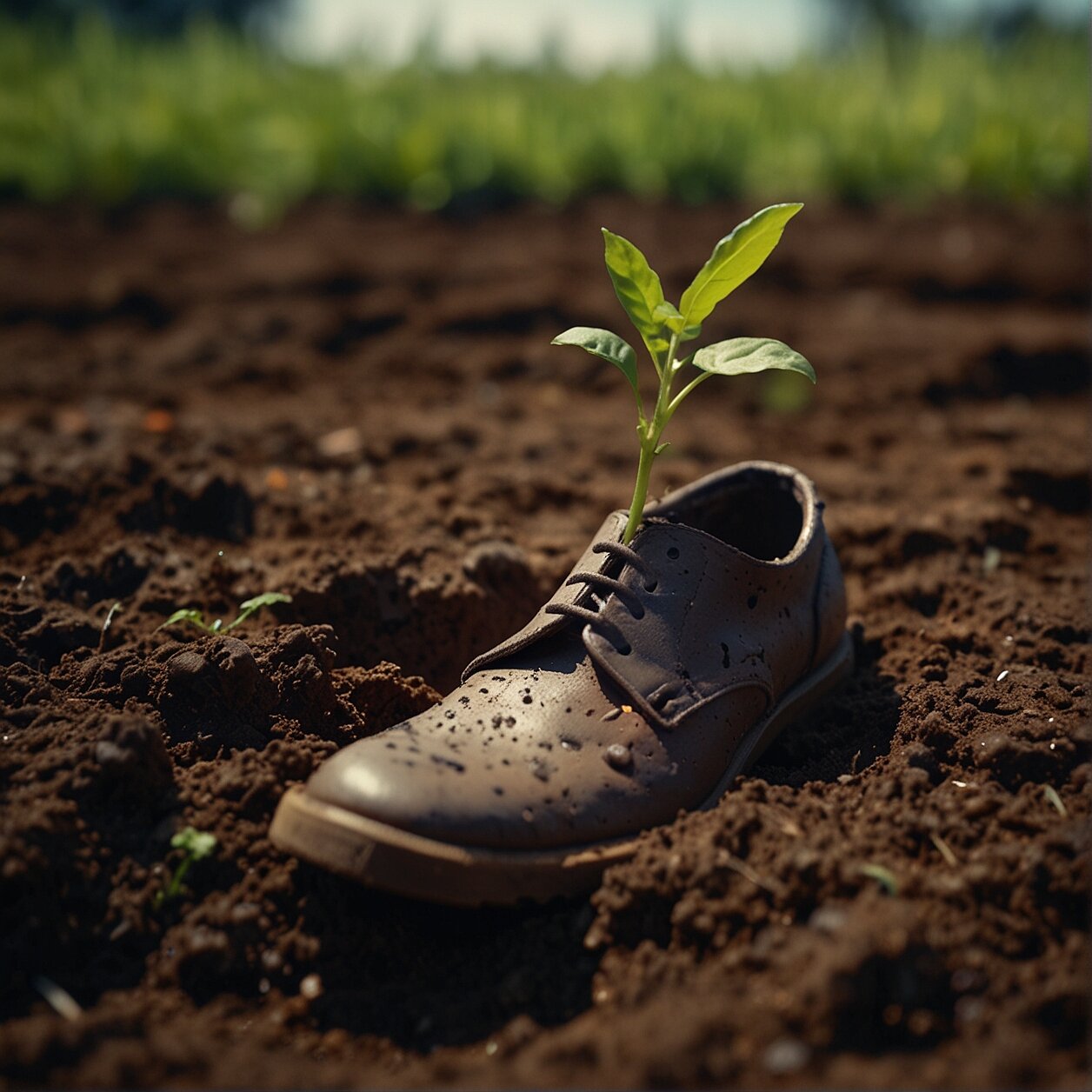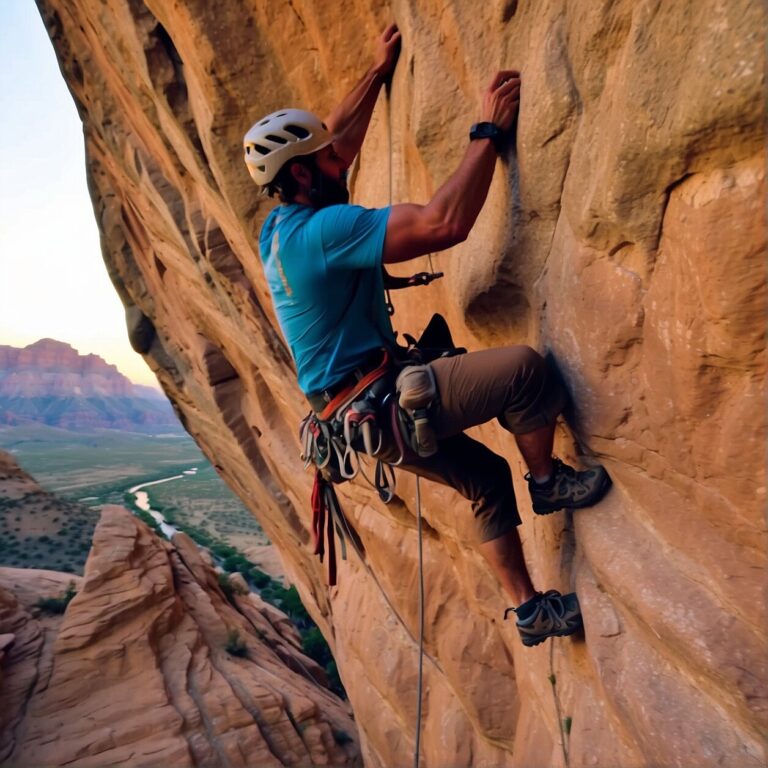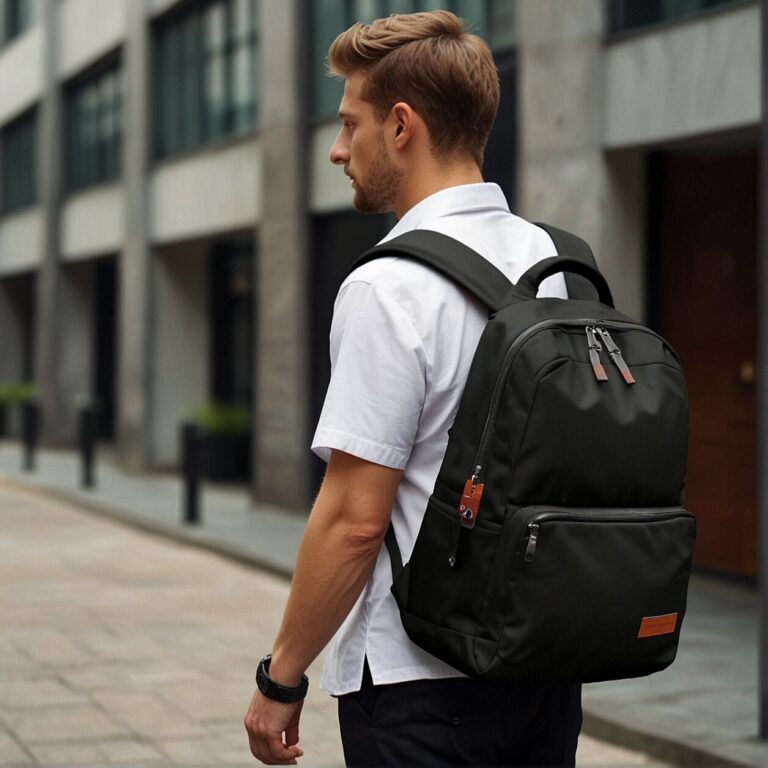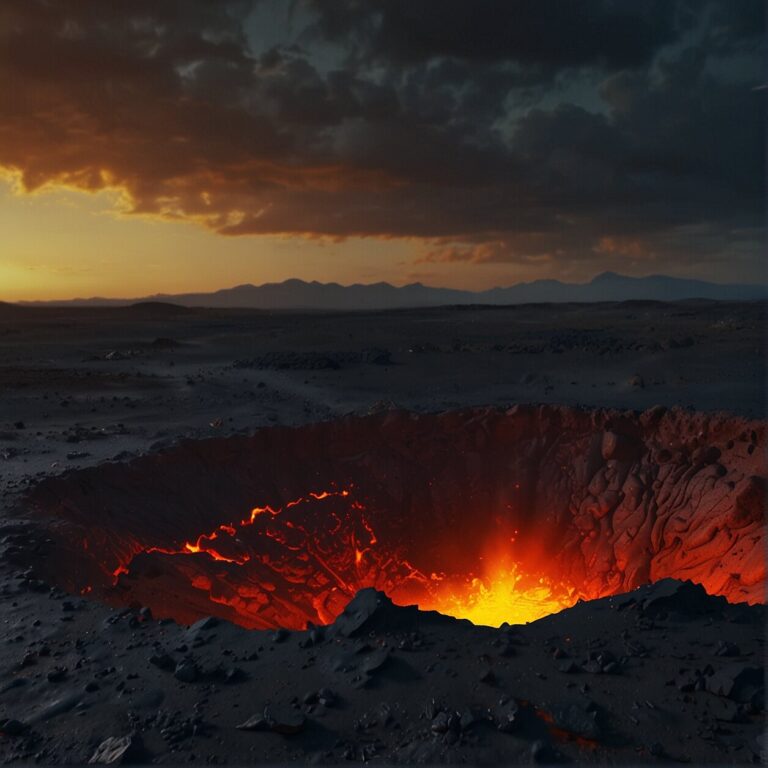Backpacking Eco-Friendly: Green Practices for Adventurous Professionals
Countless individuals are embracing the magic of backpacking, embarking on unforgettable journeys through the world’s most stunning landscapes. But as we awe at the beauty of our environ, have we ever paused to consider the impact of our explorations on Mother Nature? There’s a growing consciousness about eco-friendly backpacking practices among adventurers. Not just because it’s a trending topic, but considering the alarming rate of environmental degradation, it’s our shared responsibility as stewards of this beautiful planet. So, let’s look at how you, as a backpacking enthusiast, can embark on your next adventure in a more environmentally friendly way, minimizing your footprint and ensuring future generations can enjoy these wonders too.
“The earth does not belong to us. We belong to the earth.” – Chief Seattle
- Understanding the importance of eco-friendly backpacking
- Setting the stage for sustainable adventures
- Choosing the right gear: sustainable backpacking essentials
- Practicing leave no trace principles for responsible backpacking
- Conserving energy while backpacking: tips and techniques
Understanding the Importance of Eco-Friendly Backpacking
Shedding light on eco-friendly backpacking is critical in this day and age, but first, we must understand why. At its very core, eco-friendly backpacking is built upon the concept of minimizing human impact on nature, from the gear we use to the food we eat and how we interact with the environment around us. Remember, each step we take into the wilderness leaves an imprint, and it’s our responsibility to ensure that imprint is as small and non-disruptive as possible.
Think about it this way: The trails we love to trek today exist only because previous adventurers respected and preserved the natural environment. They carried their trash out, they didn’t pick wildflowers, and they made a conscious effort to leave wildlife undisturbed. If we continue to do the same, future generations will have the same opportunity to marvel at the beauty of our planet.
In conclusion, adopting eco-friendly backpacking practices isn’t just about reducing our carbon footprint or staying in tune with nature; it’s also about creating a sustainable legacy for future explorers. Doing our part to protect and preserve the environment today ensures a greener, healthier environment for tomorrow. So, next time you gear up for an adventure, remember the importance of backpacking in an environmentally friendly manner, and take a moment to plan how you can minimize your impact.
Setting the Stage for Sustainable Adventures
To ensure a sustainable adventure, planning is crucial. When it comes to picking the right trail, do your homework. Consider the season – hiking in the right time of year could mean preserving wildlife habitats and local vegetation. Avoid popular trails during peak times to prevent overcrowding and reduce your impact on the environment.
Sensible equipment choices can also dramatically decrease your environmental footprint. Look for sustainable outdoor brands that prioritize eco-friendly practices. Kathmandu, Merrell, Patagonia, and Vaude are just a few examples of companies dedicated to sustainability. They offer durable gear crafted from recycled materials, promoting the circular economy and minimizing waste.
Think about food and water preparation too. Opt for local, seasonal foods where possible, reducing the carbon emissions associated with food transportation. This has the added benefit of supporting local economies. Strive to minimize packaging waste by avoiding single-use plastics and bring reusables like water flasks and food containers.
Remember, even your skincare choices can impact our planet. Opt for sun creams and ointments that are safe for both your skin and our ecosystems. Many traditional sunscreens contain chemicals that can harm aquatic wildlife, so choose reef-friendly alternatives whenever possible.
As you embark on these adventures, bear in mind the advice offered by experienced eco-hikers like Carney. She advocates walking the talk and demonstrating sustainable backpacking practices through actions such as picking up trash and limiting single-use plastics. As a passionate lover of the outdoors, she stresses the importance of moving towards a more sustainable future to reduce our overall carbon footprint.
In the end, the goal is simple but profoundly important: to enjoy the wonders of nature today while preserving them for the generations of adventurous professionals who will follow in our footsteps.
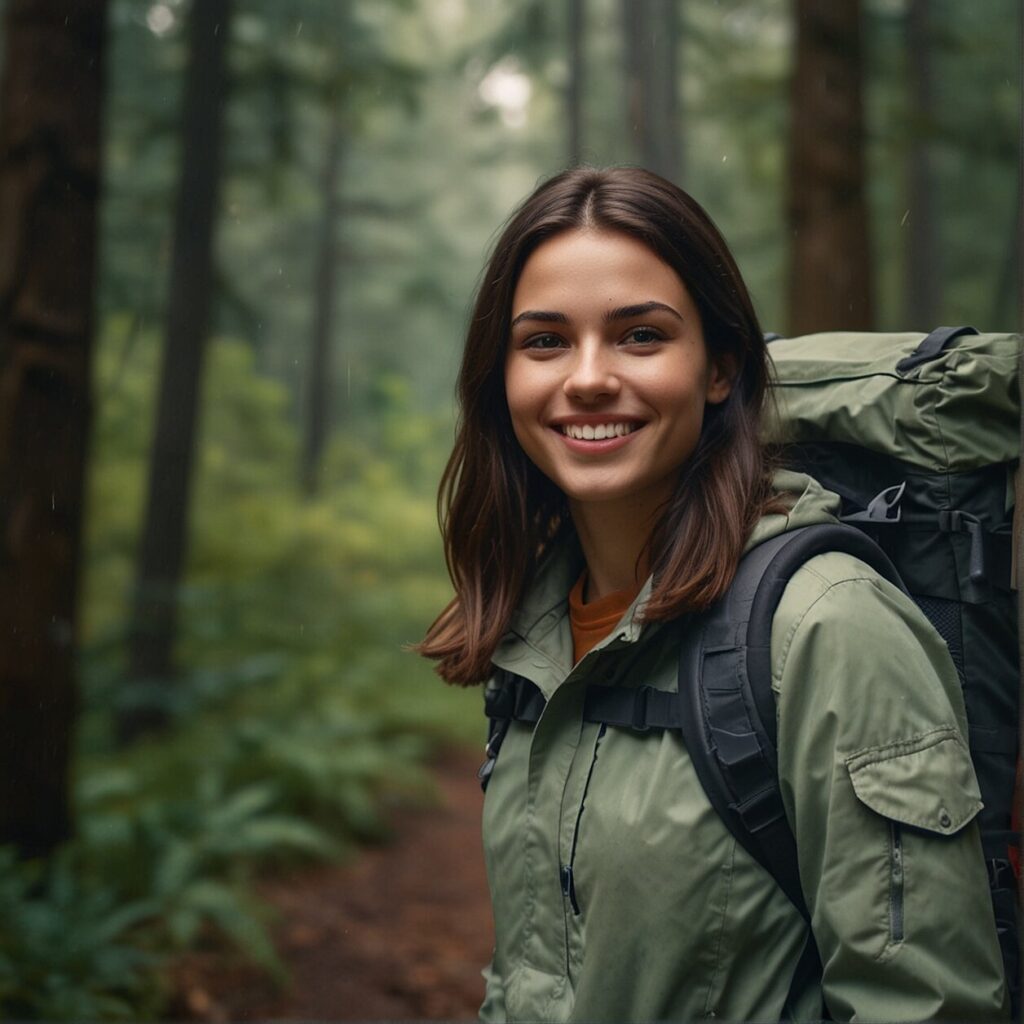
Choosing the Right Gear: Sustainable Backpacking Essentials
Implementing eco-friendly practices starts with the equipment you choose for your adventures. Let’s explore some essential gear that harmonises both functionality and sustainability.
Backpack Selection
Choosing a sustainable backpack is a critical initial step to embracing an eco-friendly backpacking habit. Brands like Kathmandu, Merrell, Patagonia, and Vaude carry lines of backpacks made from recycled materials, reducing waste and minimising impact on the environment.
Footwear Choices
The proper footwear not only provides the necessary comfort and support for endless walking, but the right pick can also reduce environmental impact. Many brands now offer vegan, ethically produced, and sustainable options for hiking boots. Make sure to do your due diligence when choosing.
Sleeping Gear
A good night’s sleep is just as important in the wilderness as it is at home. Sustainable sleeping bags, hammocks, and tents are available, many of which utilise organic, recycled, or responsibly sourced materials. Keeping warm and dry doesn’t have to come at Earth’s expense.
Sustainable Hydration
Staying hydrated while backpacking is paramount. But instead of resorting to single-use plastic bottles, consider bringing a sustainable water bottle and filter. This reduces the amount of plastic waste, and a filter means you can drink safely from natural water sources.
Eco-friendly Cooking
Did you know you can also choose sustainable cooking gear? From solar-based cooking devices to biodegradable utensils, these options reduce waste and dependence on non-renewable energy sources. Additionally, consider opting for local foods with minimal packaging to further limit waste.
As you gear up for your next adventure, remember that every little effort towards sustainability counts. Consider each piece of your gear: Is it kind to the environment? Could you make a better choice? Asking these questions not only helps you become a more responsible backpacker but also contributes to preserving the environment for future generations to enjoy.
Practicing Leave No Trace Principles for Responsible Backpacking
You might have heard of the concept “Leave No Trace,” and wondered what it means. In essence, it’s a set of practices meant to minimize your impact while backpacking. Here are the seven principles and how you can apply them.
Plan Ahead and Prepare
The first principle underscores the importance of good planning. Part of being a responsible backpacker involves knowing your destination and what to expect. This avoids any unnecessary disruption to the environment. Plan your route, look into the regulations of the area, and prepare for varying weather conditions.
Travel and Camp on Durable Surfaces
Make a point to stay on designated trails and camping sites. These areas are chosen and maintained to minimize impact on the surrounding ecosystem. If you can’t find a proper camping site, choose a durable surface like gravel or dry grass, where your presence wouldn’t cause long-term damage.
Dispose of Waste Properly
This principle simplifies to the familiar phrase, “Pack it in, pack it out.” Everything you bring with you—food containers, wrappers, etc.—should be taken back out with you. This includes toilet paper and hygiene products; use biodegradable choices when possible.
Leave What You Find
One of the joys of backpacking is discovering natural treasures. But those should be left undisturbed for others to enjoy. Don’t pick flowers, don’t disturb wildlife, and absolutely don’t carve your initials in trees.
Minimize Campfire Impact
While campfires are often a cherished part of the outdoor experience, they can cause a long-lasting impact. Avoid building fires where firewood isn’t abundant, and consider carrying a lightweight, fuel-efficient stove instead for cooking. If you must make a fire, make sure it’s small, in an established ring, and that all wood is burned to ash before you break camp.
Respect Wildlife
Remember, you’re a visitor in the home of animals and plants. Observe flora and fauna from a distance. Feeding wildlife can alter their natural behaviors and harm their long-term survival.
Be Considerate of Other People
The last principle might seem of lesser environmental importance, but it’s significant. Remember to respect fellow travelers and minimize noise. Not only does it provide a more enjoyable experience for everyone, but it can also prevent unnecessary stress on wildlife.
Incorporating these practices into your backpacking routine takes commitment. But remember, every small action contributes to a more sustainable world. Let’s preserve the beauty and wilderness of our planet for future generations of explorers.

Conserving Energy While Backpacking: Tips and Techniques
Conserving energy isn’t just about saving your own strength, but also protecting nature’s resources during your epic adventures. Here are some clever ways to ensure your backpacking journey is both energy-efficient and environmentally sustainable.
Smart Navigation
Prevention is better than cure, as they say. This adage is quite applicable when it comes to saving energy while backpacking. Plan your route meticulously to avoid unnecessary detours and re-tracing your steps. Utilize GPS apps and good old-fashioned maps to guide your pathway through nature. Smart navigation significantly reduces your energy expenditure, leaving more fuel for the fun parts of your exploration.
Dialog with Your Body
Listen to your body. It knows when it’s time to push ahead or hold back. Your body has its energy-efficient pacing; find it and stick to it. Going too fast can drain you, while moving too slowly can chill your muscles and waste energy on overheating. Understand and respect your body’s limits. Hydrate regularly, take small snack breaks, and ensure to get enough rest during night time to recharge.
Lightweight Packing
Every ounce counts in backpacking. Lighter loads require less energy to carry, so prioritize ultralight, multipurpose, and sustainable equipment. Think smart when it comes to packing. Optimize space and select items that are versatile and reusable. Not only will this method lighten your load, but it also contributes to zero-waste backpacking.
Efficient Camp Setup
Saving energy begins with setting up camp wisely. Choose flat terrain that’s sheltered from wind and rain for a smoother tent pitch. Also, arranging your camp quickly can save both time and energy. Practice pre-trip to become faster and more efficient at erecting and breaking down your camp setup.
Smart Cooking Practices
When it comes to sustenance on the trail, an efficient portable stove like the MSR Pocket Rocket is a champion. They are lightweight, compact, and have excellent fuel efficiency. Cooking in one pot can also save energy and reduce waste. Consider packing high-energy, easy-to-cook foods to save both your energy and the environment. Remember, efficient campfire cooking also means practicing Leave No Trace principles, keeping mother nature’s kitchen just as clean as you found it.
Remember, every small step towards energy conservation contributes to a larger journey towards sustainable backpacking. Safe travels!
FAQ’S
Now, let’s address some of the questions that commonly surface when we discuss eco-friendly backpacking. These frequently asked questions (FAQs) aim to shed more light on specific aspects, taking into consideration common concerns and challenges faced by many adventurous professionals. By addressing these questions, we intend to support you in reshaping your backpacking practices to be more sustainable, secure, and respectful of the beautiful environments we are so privileged to explore.
What are the best green products for backpacking?
When it comes to green backpacking, selecting the right products massively enhances your ability to reduce your environmental footprint. Here is a list of some of the best eco-friendly products that will add value to your adventures:
- BioLite CampStove 2: Cooking outdoors has never been more eco-conscious with this effective little device. Powered by biomass like sticks and twigs, this stove not only cooks your meals but also converts its heat into electricity to charge your devices.
- Grayl Geopress Water Purifier: Clean drinking water is a backpacking necessity. This water purifier removes waterborne pathogens, eliminating the need for single-use plastic bottles. It is perfect for zero-waste backpacking.
- GoLite ReGreen Windshell: Designed with 100% recycled nylon sourced from discarded fishing nets, this jacket is light, packable, and strong enough for rigorous outdoor ventures. A green choice for your hiking gear.
- Goal Zero Nomad 20 Solar Panel: This portable solar panel is designed to be lightweight and versatile, providing ample energy to keep your electronic devices charged without relying on the grid.
- Bee’s Wrap Reusable Food Wrap: Instead of using plastic wraps or bags, opt for Bee’s Wrap. It’s a natural, reusable product that can cover and store your food, thus eliminating plastic waste along your trail.
By incorporating these green products into your backpacking gear, you can significantly reduce environmental impact and enjoy sustainable adventures, guilt-free.
What are some eco-friendly alternatives to common backpacking gear?
Adopting an eco-conscious lifestyle extends not only to our everyday lives but our adventures too. This brings us to consider eco-friendly alternatives to traditional backpacking gear. Starting with clothing, opt for brands that use sustainable materials and manufacturing processes. Kathmandu, Patagonia, or Vaude offer backpacking clothes made from recycled materials and natural fibers.
Alongside clothes, gear such as tents and sleeping bags pose an opportunity to go green. Look for options made from recycled materials and avoid products treated with perfluorinated compounds (PFCs), as these can negatively impact the environment.
Change also starts with the little things, such as the toiletries we take on our trips. Consider switching to biodegradable soap and toothpaste, as well as a natural suncream. The advantage? These products are harmless to the local water sources and terrain you’ll be visiting!
Moving on to nourishment, how about transforming your food and water supplies? Choose locally-sourced foods with minimal packaging and transport them in reusable containers. When it comes to hydration, single-use plastic bottles are a big no. Switch to a sustainable water bottle and filter for guilt-free sips out in the wild.
Selecting more eco-friendly gear is an important step towards responsible and low-impact backpacking. Happy Trails!
How can I conserve water while backpacking?
Conserving water while backpacking is both environmentally friendly and resource-efficient. Here are some savvy strategies you can employ.
1. Pre-hydration is Key: Start your trip completely hydrated. This can help reduce the amount of water you need to carry initially and increase your body’s efficiency in processing fluids.
2. Reusable Water Filters and Purifiers: Instead of packing numerous plastic water bottles, consider using reusable water filters and purifiers. They’re convenient, reduce waste, and provide a safe way to drink from natural sources.
3. Use Water Wisely When Cooking: Try to plan meals that require less water to prepare. Also, try to consume any leftover water after cooking, rather than discarding it.
4. Absorption Cooking: This technique involves using just enough water in your cooking that it all gets absorbed, reducing wastage.
5. Collection and Storage: Taking advantage of natural water sources is another excellent way to conserve water. Always carry a collapsible bucket or other containers for collecting and storing water.
Lastly, always remember to never contaminate water sources. Use biodegradable cleaning products and do any washing at least 200 feet away from bodies of water.
What are the benefits of eco-friendly backpacking?
When you adopt eco-friendly backpacking, you’re not just lightening your footprint on nature; you actually gain diverse benefits on a personal level as well. Let’s discuss a few of the advantages.
Physical Health Benefits: Eco-friendly practices such as mindful hiking, pacing yourself, and carrying lightweight, sustainable gear can help avoid straining your body. This can result in improved stamina, better cardiovascular fitness, and fewer aches and pains.
Mental Wellness: Being in nature, responsibly, fosters mindfulness and reduces stress. The knowledge of practicing an activity in a way that protects the environment can further enhance the positive psychological effects of backpacking.
Financial Savings: Opting for gear from sustainable brands such as Kathmandu, Merrell, Patagonia, and Vaude might seem like an upfront investment. However, these companies manufacture quality items designed to last longer, saving you from frequent replacements.
Economic Impact: Adopting eco-friendly food and water choices, like choosing local foods and using reusable containers, not only limits waste but also supports local businesses, contributing to the local economy of the places you visit.
Sustainable Community Building: Practicing environmental stewardliness attracts like-minded individuals. You can become part of a community with shared values, which can empower, educate, and encourage each to further sustainable exploration.
Remember, every step towards eco-friendly backpacking is a stride towards retaining the planet’s beauty for future generations while enhancing your own backpacking experience.
How can I maintain hygiene while backpacking in an eco-friendly way?
Marvelous question! Maintaining hygiene while adhering to sustainable principles is a matter of considering your habits and products. Let’s review some strategies.
Biodegradable Soap: Utilizing environmentally friendly soaps and cleansers is paramount. Various brands offer biodegradable options that leave minimal impact on nature. However, it’s important to note that even biodegradable soap should not be used directly in water bodies. Always keep a safe distance of at least 200 feet.
Water Usage: Conserving water is another crucial aspect. Use only what you need for bathing and washing utensils. If using a water source, remember to carry water farther away from it before cleaning to avoid contaminating it with any debris or soap.
Eco-friendly Wipes: Biodegradable wipes can be a convenient alternative for quick clean-ups. Again, dispose of these responsibly and do not discard them in natural surroundings, even if they’re biodegradable.
Nature’s Toilet Paper: When nature calls, consider using natural elements like stones or leaves instead of toilet paper. If you prefer using toilet paper, opt for a brand made from recycled materials and remember to pack it out instead of burying.
Solid Waste Disposal: For disposing of solid waste, dig a small cat-hole about 6-8 inches deep and at least 200 feet from water bodies, trails, and campsites. Fill the hole back in with the original dirt when you’re done.
Dental Hygiene: Brushing your teeth is essential, even on the trails. Instead of spitting out the toothpaste, consider swallowing it or using natural, edible alternatives to conventional toothpaste. Carrying your toothbrush without a protective case can also save weight and reduce plastic use.
There you have it – smart choices and practices that support hygiene and eco-friendliness simultaneously. Take one step at a time and soon enough, these steps will become second nature!

